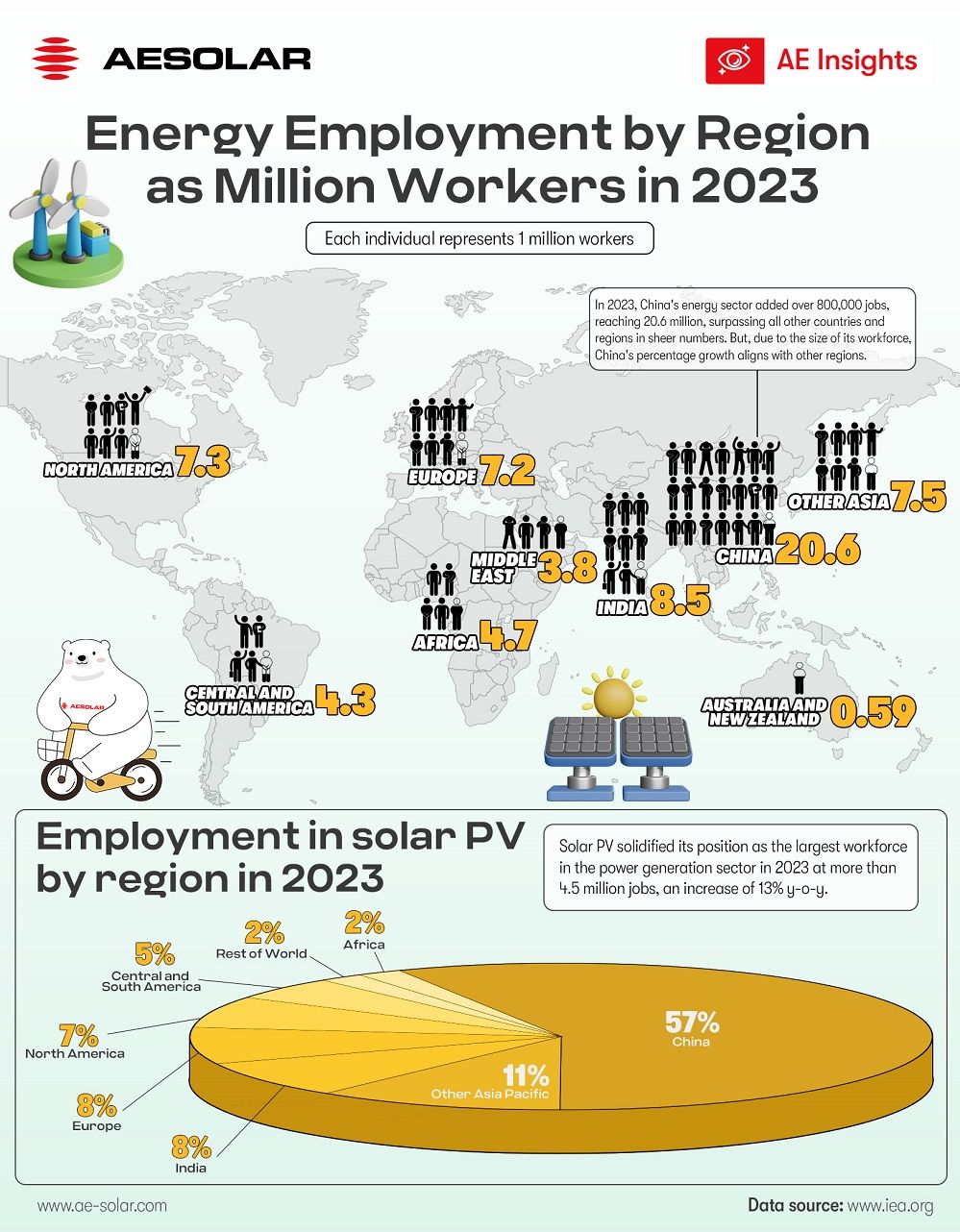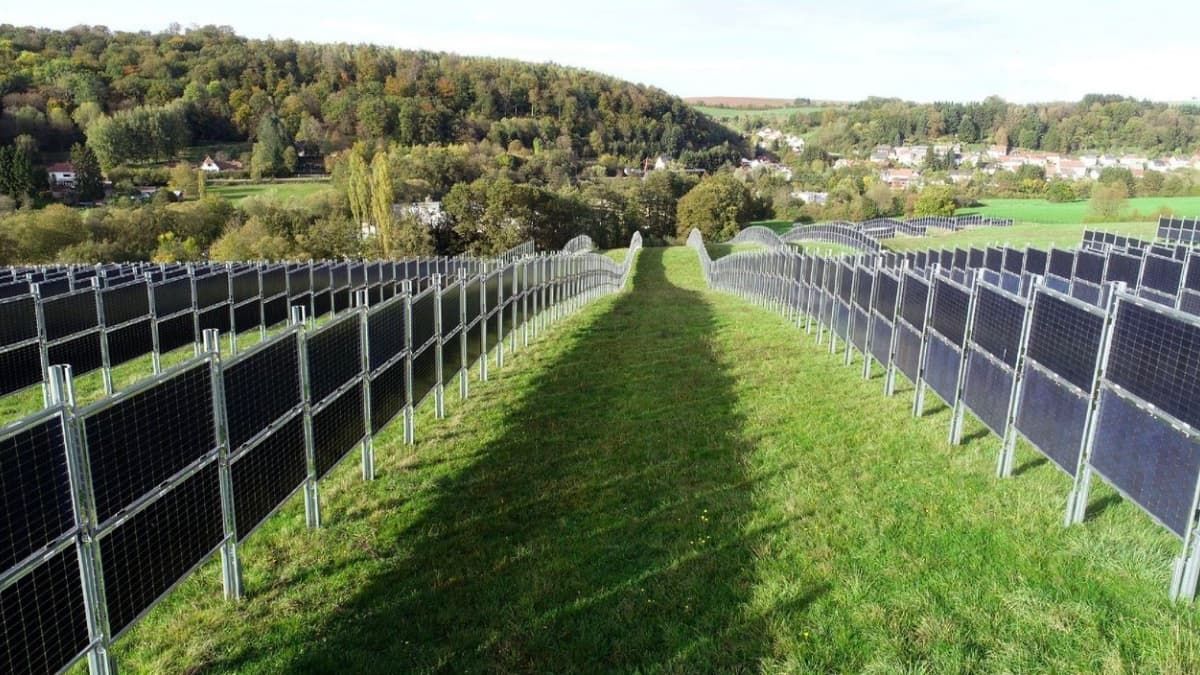The energy industry is undergoing a transformative shift, with renewable energy leading the charge in employment creation worldwide. In 2023, global energy sector jobs reached 67.39 million, with solar photovoltaic (PV) solidifying its status as the largest employer in power generation. As highlighted in the IEA World Energy Employment Report 2024, solar PV alone accounted for over 4.5 million jobs globally, marking a significant 13% year-over-year growth. This underscores its critical role in advancing the clean energy transition while creating economic opportunities across regions.

A Regional Snapshot of Solar PV Employment
China leads the way in solar PV employment, accounting for a staggering 57% of the global workforce in this sector. The country's dominance stems from its robust manufacturing capacity and significant domestic demand for solar installations. Other Asian regions, including India and Southeast Asia, collectively contribute 19% to the global solar PV workforce, driven by their ambitious renewable energy targets and expanding project pipelines.
Europe and North America are carving out their niches by focusing on high-value jobs in research, development, and operations & maintenance (O&M). While these regions account for 8% and 7%, respectively, of global solar PV employment, they emphasize quality over quantity, leveraging advanced technologies and skilled labor. Meanwhile, Africa and Central & South America, with 2% and 5%, respectively, are poised for growth as these emerging markets ramp up renewable energy initiatives to address energy access challenges and economic development goals.
Solar PV in the Broader Energy Employment Context
Solar PV stands out not only as the fastest-growing segment within the energy sector but also as a driving force for employment diversification. The majority of jobs are concentrated in manufacturing and installation, reflecting the rapid pace of new solar deployment. However, as global solar capacity continues to expand, the demand for skilled workers in O&M services is expected to grow significantly, offering stable and long-term job opportunities.
Additionally, the solar PV sector is contributing to broader social and economic objectives, such as gender inclusivity and skill development. In emerging markets, particularly in Africa and Southeast Asia, solar initiatives are creating opportunities for local communities by addressing skill gaps and fostering green development.
Driving Innovation for Real-World Applications
To maintain solar PV's momentum as a clean energy leader, innovation must go beyond panel efficiency and installation. Expanding solar applications to solve real-world challenges will unlock new opportunities and sustain long-term growth. For example, agrivoltaics, which combines solar panels with agricultural use, can optimize land use while enhancing food security. Similarly, floating solar systems on water reservoirs provide dual benefits of clean energy generation and water conservation.

At AESOLAR, we are committed to pushing the boundaries of solar innovation. From agrivoltaics to floating solar and infrastructure integration, we strive to create adaptable and efficient solutions that address the world’s evolving energy needs. By investing in real-world applications, we aim to make solar power accessible and relevant to every aspect of modern life.
Find AESOLAR PV solution HERE
